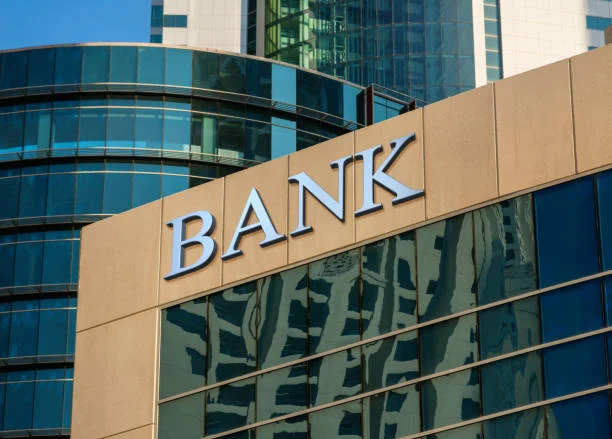The collapse of two American companies—a car parts supplier named First Brands and a subprime auto lender, Tricolor—should, on its face, be a footnote in the business cycle. Companies fail. It’s the natural, if unpleasant, churn of a market economy. Yet, these two bankruptcies have sent a distinct tremor through the highest levels of global finance, prompting public warnings from the very people tasked with preventing the next systemic meltdown.
The reaction is the real story here. When Bank of England Governor Andrew Bailey stands before a parliamentary committee and says these events are ringing “alarm bells” (US firm collapses ringing 'alarm bells', says Bank of England chief - BBC), it’s not political theater. Central bankers choose their words with a precision that borders on the surgical. His follow-up question is the one every analyst is now quietly asking: Are these failures “idiosyncratic,” or are they “the canary in the coal mine?”
Jamie Dimon, a man who runs one of the world's most systemically important institutions, Chase Bank, offered a less poetic, more verminous take. “When you see one cockroach,” he warned, “there are probably more.”
The canary and the cockroach. One warns of a toxic environment, the other signals a hidden infestation. Both metaphors point to the same conclusion: the visible problem isn't the real problem. The real problem is the invisible structure that allowed it to emerge. And that structure is the burgeoning, opaque, and dangerously familiar world of private credit.
Let’s be clear about what’s happening. The alarm isn’t just about bad loans to a car parts company. It’s about pattern recognition. Both Bailey and his deputy governor, Sarah Breeden, have drawn explicit parallels to the lead-up to the 2008 global financial crisis. Breeden stated it plainly: “We can see the vulnerabilities here... We can see parallels with the global financial crisis.”
The specific parallel that should make the hairs on your neck stand up is Bailey’s reference to the re-emergence of “slicing and dicing and tranching of loan structures.” This isn't just financial jargon; it's the ghost of 2008. It’s the practice of taking a bundle of loans—some good, some bad, some terrible—and chopping them into complex securities, obscuring the underlying risk until it’s nearly impossible to track. It’s like taking a crate of fruit, with a few rotten apples at the bottom, and putting it all in a blender. The resulting smoothie looks uniform, but the poison is still in there. You just don’t know which sip will be the one to get you.

This is all happening in the private credit market (a market now estimated at a staggering $1.7 trillion), which has exploded in the years of low interest rates. It became the go-to place for companies deemed too risky for traditional lenders like US Bank or Wells Fargo Bank. This sector has grown exponentially in the last decade—well, to be more precise, it has ballooned from roughly $400 billion to $1.7 trillion since 2015.
I've looked at hundreds of public filings from regulated banks, and the level of disclosure is exhaustive. By contrast, the lack of standardized reporting in private credit is what keeps analysts like me up at night. We’re talking about a systemically important market operating with the transparency of a black box. What exactly is the quality of the collateral? How are these loans valued on the books of the funds that hold them? How interconnected are the players? The honest answer, for many of these questions, is that we don’t have the data.
The response from the Bank of England is telling. They aren’t issuing a fine or a new rule. They’re planning to conduct a “stress test.” This is an admission of ignorance, albeit a prudent one. It’s the regulatory equivalent of walking into a dark room and fumbling for the light switch. They know the room is full of furniture, but they have no idea how it’s arranged, and they’re trying not to break a leg.
But how do you accurately stress-test a system whose entire appeal is its privacy and lack of public disclosure? What assumptions do you make about default correlations when the underlying loan data is proprietary? Are you testing for a slow-burn recession or a sudden liquidity shock, like the one that froze markets in 2008? The test itself is a guess based on incomplete information.
This is where Bailey’s historical reflection is so critical. He recalled that before the 2008 crisis, the prevailing wisdom was that sub-prime mortgages were “too small to be systematic.” That, he said, was “the wrong call.” The issue wasn't the size of the initial pile of bad loans; it was the leverage and complexity layered on top of them, spreading the risk through the system like a virus.
Are we making the same mistake again, just with a different asset class? We swapped subprime mortgages for leveraged corporate loans, and the regulated balance sheets of institutions like Citi Bank or PNC Bank for the opaque funds of the private credit world. The names have changed, but has the fundamental risk calculus? That’s the multi-trillion-dollar question. The failures of First Brands and Tricolor don't answer it. They just prove it's the right question to be asking.
The problem isn’t that two companies went bankrupt. The problem is that a market larger than the economy of most countries has been allowed to swell in the shadows, employing the very financial engineering that nearly broke the world sixteen years ago. The alarm bells from central bankers aren't a prediction of doom; they are an admission of a critical data deficit. The real crisis isn't what we know about these private loans. It's the terrifying reality of what we don't. And in financial markets, a risk you cannot see and cannot measure is the most dangerous kind of all.